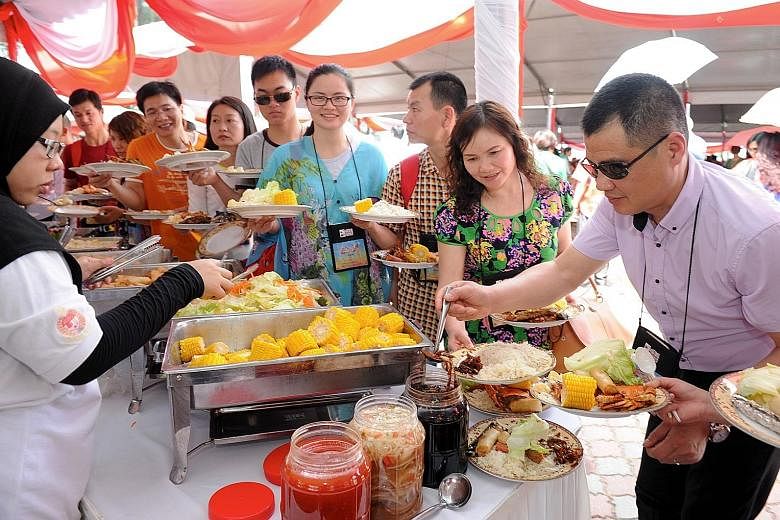Malaysia's buzzing cities, picturesque islands and mouth-watering delicacies have drawn all manner of Chinese tourists, who make up the third-largest group of visitors, after Singaporeans and Indonesians.
In 2006, slightly more than 530,000 Chinese tourists visited. That figure has more than tripled to 1.75 million last year - notwithstanding a small dip in 2014, after the disappearance of flight MH370 en route from Kuala Lumpur to Beijing.
Chinese tourists were also the third-largest spenders, chalking up RM5.7 billion (S$1.8 billion) in receipts in 2015, or RM3,500 a head.
"Because most of the Chinese travel in tour groups, with fixed itineraries and guide recommendations, they mostly buy local products," said Datuk Albert Tan Sam Soon, president of the Malaysian Chinese Tourism Association.
A survey by the tourism ministry showed visitors largely spent on food items, clothes and handicraft.
-
WHAT THEY LIKE
FAVOURITE FOOD ITEMS
• Nutmeg oil
• Local coffee
• Ingredients for Malaysian dishes like bak kut teh (pork rib soup)
FAVOURITE NON-FOOD ITEMS
• Pewter ware
• Ointments, especially for rheumatism
Malaysia eased visa applications for China last year, introducing electronic visas and a temporary visa waiver scheme for short-term visits. The number of visas issued nearly doubled in the scheme's 10 months, compared with 2015 figures.
"Concerted efforts will continue, to draw tourists during the three major holiday seasons, namely Chinese New Year, summer vacation and year-end holidays," said Deputy Prime Minister Ahmad Zahid Hamidi last month. Initiatives include beefing up promotions and increasing the number of flights.
Chinese travellers mostly come from Shanghai, Guangzhou and Beijing - "Tier 1" cities. Mr Tan said such visitors tend to have more travel experience. They head to Sabah or island destinations such as Langkawi and Redang Island, are younger and prefer free and easy tours.
Airlines are introducing new routes, linking Tier 2 cities such as Nanjing, Wuhan and Kunming to KL and Penang, as well as Tier 1 cities to smaller towns like Kota Kinabalu that are gateways to beach resorts.

